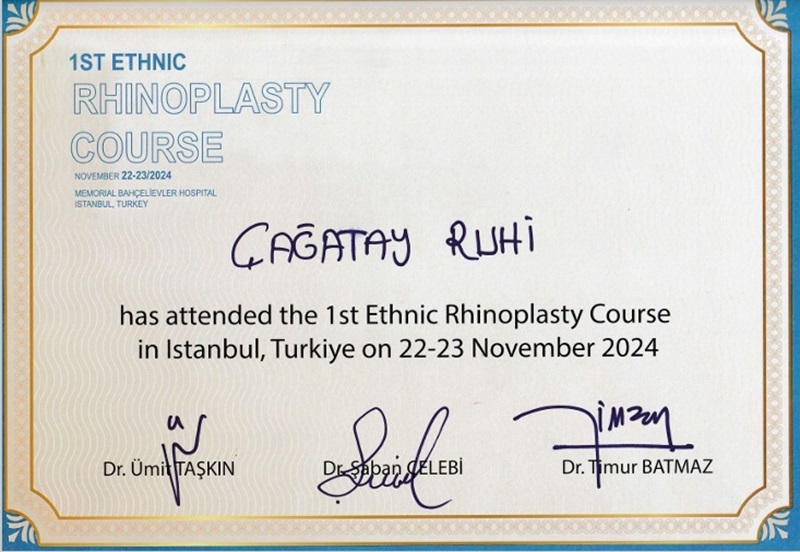Ethnic Rhinoplasty Turkey The Best Surgeon Istanbul
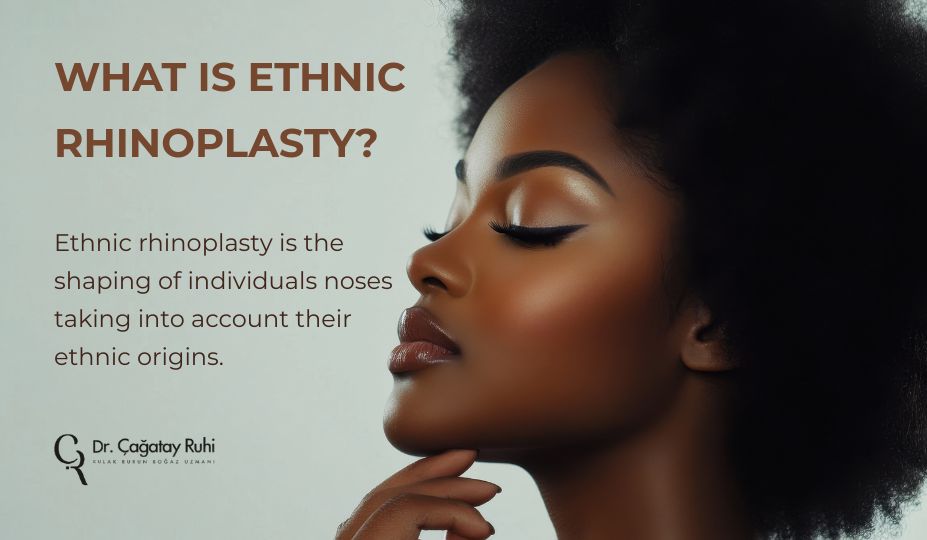
What Is Ethnic Rhinoplasty?
Ethnic rhinoplasty is the shaping of individuals noses taking into account their ethnic origins. The aim here is to preserve people's natural appearance and anatomical structures.
Ethnic Nose Job In Turkey
Our surgeon, who specializes in ethnic nose job, knows the anatomical features and aesthetic goals characteristic of each ethnic group and offers personalized treatment for them. For example, white noses require reduction surgery to remove protrusions, while African American or Asian noses benefit from augmentation. Techniques to increase projection and fill potholes. Skin thickness and elasticity vary by ethnicity, affecting the surgical approach and results.
Choosing a competent ethnic rhinoplasty specialist is important for both a pleasant appearance and a natural appearance.
How Is Ethnic Rhinoplasty Different?
Rhinoplasty covers general nose operations, rhinoplasty ethnic nose aims to enhance the patient's natural beauty while preserving their unique ethnic identity.
Types Of Ethnic Rhinoplasty
Some types of ethnic rhinoplasty are listed below. General nose characteristics of ethnic origins are stated. With surgery, these features are slightly changed without losing their originality. Additionally, rhinoplasty techniques are frequently used in patients with thick skin. Typical patients who have ethnic thick skin rhinoplasty are of African, South East Asian or Hispanic descent.
Indian Nose
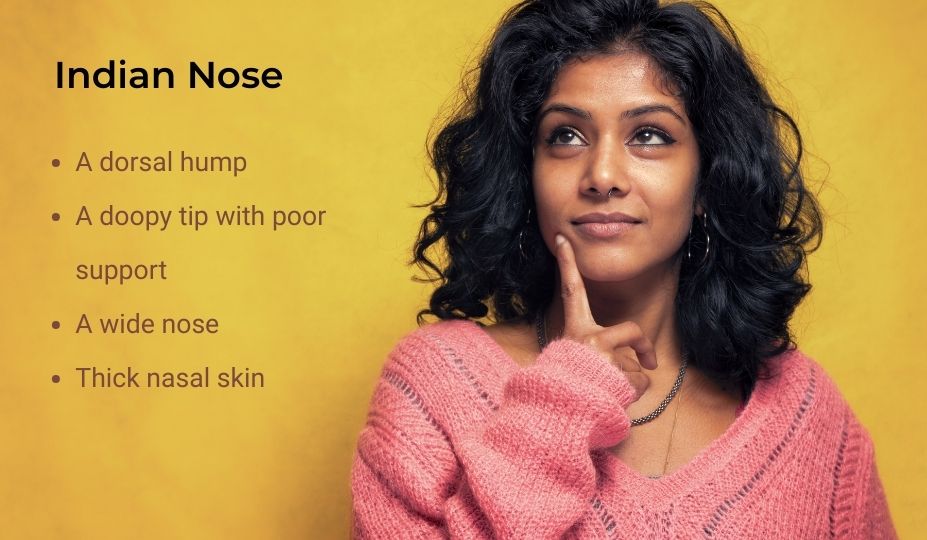
In general, the common feature of the Indian nose is the dorsal hump combined with the drooping tip. The reason for these features is that Indian noses have less cartilage support than Western noses. There is generally a wider nose and often thicker skin.
Parts to be reshaped
- A dorsal hump
- A doopy tip with poor support
- A wide nose
- Thick nasal skin
Middle Eastern Nose Rhinoplasty
In patients from the Middle East, Arab, Turkish, North African or Persian ethnic culture predominates. The typical nasal appearance is a wide, drooping nasal tip with a high root, a wide, overly protruding ridge, and very thick nasal skin.
Parts to be reshaped
- A high radix
- A wide overprojected dorsum
- Hanging nasal tip
- Thick nasal skin
Afro -Carribean nose
The Afro -Carribean nose is a wide nose both at the bridge and the nasal tip. The nasal bridge is characterised by a low, undeprojected and flat appearance with a low radix. A wide nasal tip and flared nostrils are also typical of an Rhinoplasty On Black Nose. The patients are operated Wide Nose Ethnic Rhinoplasty.
Parts to be reshaped
- An underprojected, wide and flat nasal bridge
- A wide nasal tip and short nose
- Flared nostrils
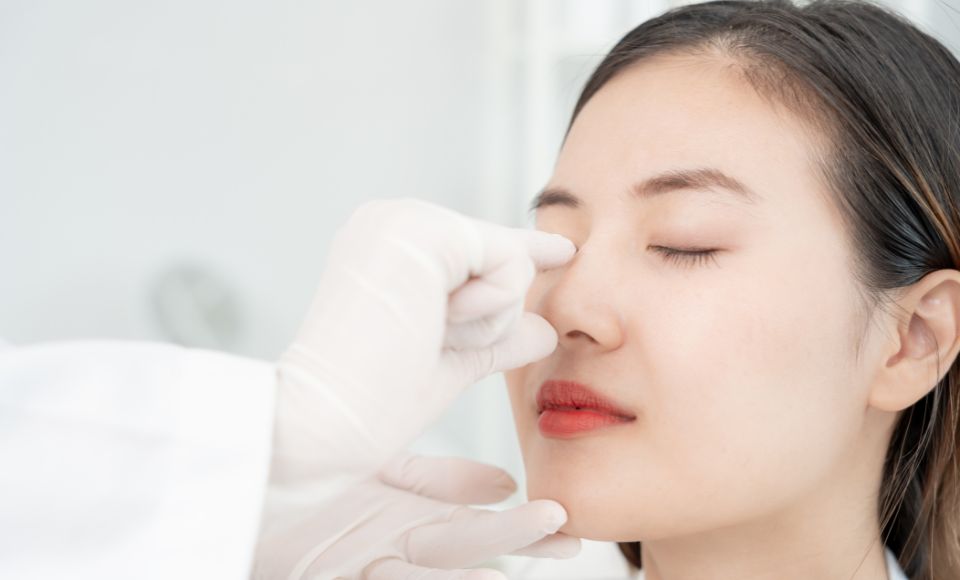
The Asian nose
In general the nasal bridge is lower .
The nasal tip is also underprojected with a round appearance and fullness in the infratip (the region just below the nasal tip). Generally there is alar ( nostril) flaring.
Parts to be reshaped
- Underprojected and flat nasal bridge
- Underprojected nasal tip
- Short nose
- Nostril flaring
African American Rhinoplasty/ Black Ethnic Rhinoplasty
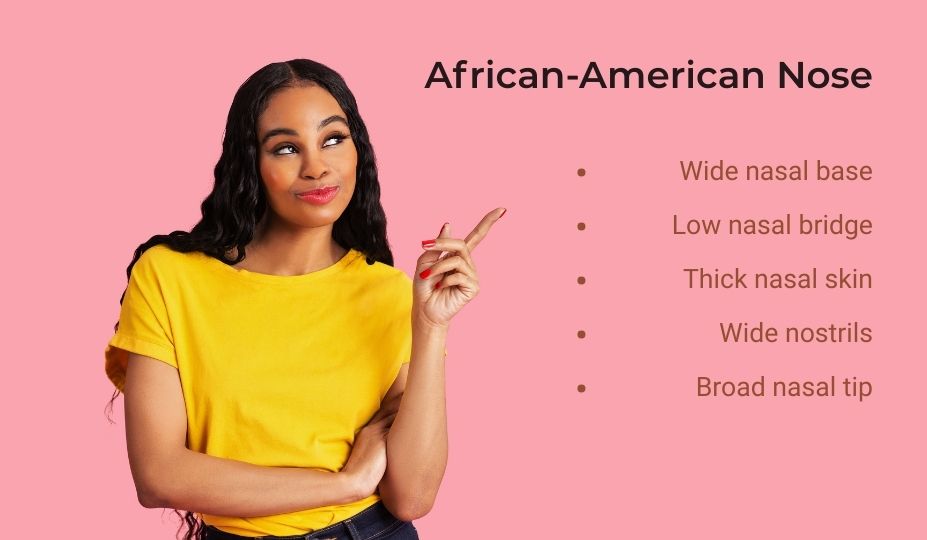
Parts to be reshaped
- Wide Nasal Base
- Low Nasal Bridge
- Thick Nasal Skin
- Wide Nostrils
- Broad Nasal Tip
Rhinoplasty for black people are aimed to narrow the nose, remove excess fat layer, increase or decrease it, add to the bridge using cartilage or implants, and help improve breathing.
Mixed Race Rhinoplasty
Mixed-race rhinoplasty aims to achieve a more aesthetically balanced and natural result by taking into account the nose characteristics of different ethnicities. The nose structure of a patient of Caucasian, Asian or African origin is different, and therefore the patients' rhinoplasty needs also vary.
This procedure may include reshaping the tip of the nose, straightening the nasal dorsum, reducing the width of the nose, or reducing the size of its holes. The method/methods that suit the patient's characteristics and needs are preferred.
Is An Open or Closed Approach Used in Ethnic Rhinoplasty?
Both methods are used.
In the open approach, a small incision is made in the skin of the nose, allowing the ethnic rhinoplasty surgeon access to a larger area. This method is preferred for more complex revisions or detailed corrections.
In the closed approach, the ethnic rhinoplasty surgeon makes minor incisions inside the nostrils to access the nasal tissues. This method does not leave a visible scar and allows the patient to recover faster. Its disadvantage is that it limits the ethnic rhinoplasty surgeon's working area.
On a relatively simple Indian nose with a small dorsal hump, a good result is achieved by the closed approach. However, in a patient with a very large dorsal hump, the open approach will be more effective as grafts are needed to support the tip.
The choice between these approaches depends on the patient's anatomy and the changes to be made in the nose.
Nose Reshaping To Enhance Facial Proportion
By changing the shape, size, or contour of the nose, people aim to achieve the overall balance of the face and increase its harmony. Thus, patients have a more attractive appearance. On the other hand, people do not want their noses to resemble Western ones. They want to have a more natural look that is true to their ethnicity.
Candidates for ethnic rhinoplasty surgery
- Suitable candidates for ethnic rhinoplasty surgery are individuals who have aesthetic or functional problems with their nose but are in good general health.
- In some cases, parents opt for surgical intervention to solve their children's congenital or acquired appearance problems, aiming to protect their children from being exposed to peer bullying.
- Ethnic nose surgery can generally be applied to all age groups when the individual reaches adolescence, that is, usually around the age of 16. However, candidates between the ages of 20-45 prefer this operation.
- It should be remembered that all candidates must be in good general health and their post-operative expectations must be realistic.
- Additional factors (such as breathing difficulties, drooping nose tip) may occur in older ages. This means additional treatments may be needed for a successful outcome.
- For your questions, you can contact your expert ethnic rhinoloplasty surgeon.
Who is not a good candidate for ethnic rhinoplasty?
It is not recommended for those with
- body dysmorphic disorder,
- obstructive sleep apnea,
- bleeding disorders
- those who have had rhinoplasty within 1 year.
Ethnic Rhinoloplasty Surgery Overview |
|
|
Anaesthetic |
General Anaesthetic |
|
Surgery time |
2 to 3 hours |
|
Hospital stay |
Surgery Day |
|
Time off work |
2 weeks |
|
Full recovery |
6 weeks |
|
Best results |
9 to 12 months |
Ethnic Rhinoplasty in Turkey Procedure
- Before the procedure, anesthesia is applied to the individual so that he/she does not feel pain.
- Turkey's best ethnic rhinoplasty surgeon makes the necessary incision on the persons's nose. It shapes the nose structure according to the patient's wishes and needs, as previously decided.
- If the patient's nasal septum is deviated, he may have hard breathing. The procedure necessary to solve this problem is realised at this stage.
- After the shaping and septoplasty procedures are completed, the surgical incisions are carefully closed and stitched.
- After ethnic nose surgery, it is essential to follow the surgeon's recommendations and instructions. Regular check-ups should be scheduled as recommended. After the ethnic rhinoplasty healing process is completed, the patient's new nose shape becomes visible.
In some cases, the doctor and the patient may decide on ethnic rhinoplasty revision together. This may be necessary after changes that come with age or for complex procedures.
Ethnic rhinoplasty recovery & aftercare for ethnic rhinoplasty
It is important to rest and avoid strenuous activities for a few days during ethnic rhinoplasty recovery. This will help ensure healing. Usually, daily routines can be returned within a week after surgery.
In the first stage, discomfort such as swelling and bruising are common. These can be effectively treated with painkillers and cold compresses. It is necessary to keep your head elevated at home to prevent swelling.
Bruising typically fades away within one to two weeks, while swelling gradually diminishes over the course of several months. Throughout the healing process, it's crucial to shield the surgical site from any impacts and direct sunlight to facilitate optimal recovery.
Ethnic rhinoplasty in Istanbul
Ethnic rhinoplasty is not about changing one's ethnic identity, but about improving nasal harmony while respecting the unique characteristics of each individual. If you are considering ethnic rhinoplasty in Istanbul, Turkey, Dr Cagatay Ruhi is one of the best rhinoplasty surgeons with extensive expertise in this field. You can achieve the beauty you desire by considering the anatomical differences between ethnicities, such as skin thickness, cartilage strength, and nasal bridge shape to achieve natural and balanced results without compromising your cultural identity.
Istanbul has become a leading centre for ethnic rhinoplasty thanks to its internationally trained surgeons, high medical standards and competitive prices. Choosing a surgeon with deep experience in ethnic cases is crucial not only for technical precision, but also to preserve cultural nuances that affect patient expectations and outcomes.
Benefits of getting ethnic rhinoplasty
Nose Surgery Benefits:
- Balancing the Nose Profile
- Correcting Breathing Problems
- More Attractive and Aesthetic Appearance
- Increasing Self-Confidence
- Improving Body Image
How Much Does Ethnic Rhinoplasty Cost?
The price of ethnic rhinoplasty surgeries varies depending on the complexity and scope of the procedure. Ethnic rhinoplasty Turkey price is between 3500€ and 6500€.
FAQ
I live abroad, how can i have ethnic rhinoplasty surgery?
Firstly, please contact us for any questions you may have.
Secondly;
- Plan ahead for your ethnic rhinoplasty surgery.
- Check your visa requirements.
- Talk to your doctor and health insurance provider by updating your medical history
- Take Turkey's touristic beauties into account when planning your time.
- While packing your suitcase, do not forget to take your personal documents, tickets and emergency numbers, medical history, and comfortable clothes with you.
Is a nose job in Turkey safe?
Turkey is a popular destination for medical tourism and clinics offer medical services at affordable prices. Question the safety and quality standards of the center to which you will entrust your health.
Before having surgery, make sure the institution meets these standards. Be sure to check out the ethnic rhinoplasty before and after photos.
Talk to your doctor about your medical history. Surgery prices are cheap in Turkey due to the exchange rate. Don't let this mislead you.
Why Do So Many People Get Ethnic Nose Jobs In Turkey?
The firstly reason for this is that Ethnic Rhinoplasty surgery Turkey Costs are much cheaper than many Western countries, without sacrificing quality.
Best Ethnic Rhinoplasty Surgeons who are experts in their field perform your surgery. In addition, Turkey is a great destination center, and you will have the opportunity to have a nice holiday.
How long do you have to stay in Turkey after rhinoplasty?
After the operation, patients usually stay in the hospital for one night. The cast and splints on the back of the nose are removed within 3-6 days after the surgery.
It is sufficient to stay in Turkey for an average of 6-7 days for the surgery. You do not need to come to Turkey again for control. Tracking and controls can be done online.
Do ethnic nose jobs last forever?
Ethnic rhinoplasty is used for a long time, but it is not permanent. There may be some slight changes depending on age. It is important to have realistic expectations and understand that the nose may change over time.
Is ethnic rhinoplasty worth it?
Yes, it is worth having ethnic rhinoplasty surgery.
It will improve your sense of self, make you feel good, and help you breathe easier if you are having problems. Please see benefits of getting ethnic rhinoplasty.
